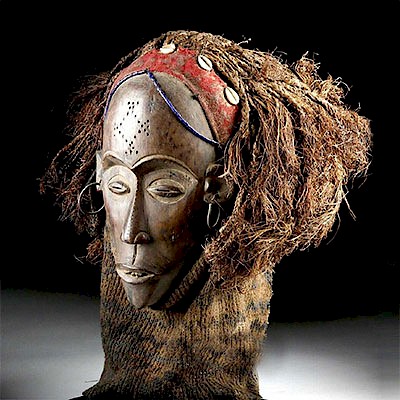Rare South Arabian Bronze Camel
Lot 46
About Seller
Artemis Gallery
686 S Taylor Ave, Ste 106
Louisville, CO 80027
United States
Selling antiquities, ancient and ethnographic art online since 1993, Artemis Gallery specializes in Classical Antiquities (Egyptian, Greek, Roman, Near Eastern), Asian, Pre-Columbian, African / Tribal / Oceanographic art. Our extensive inventory includes pottery, stone, metal, wood, glass and textil...Read more
Estimate:
$1,000 - $1,500
Absentee vs Live bid
Two ways to bid:
- Leave a max absentee bid and the platform will bid on your behalf up to your maximum bid during the live auction.
- Bid live during the auction and your bids will be submitted real-time to the auctioneer.
Bid Increments
| Price | Bid Increment |
|---|---|
| $0 | $25 |
| $300 | $50 |
| $1,000 | $100 |
| $2,000 | $250 |
| $5,000 | $500 |
| $10,000 | $1,000 |
| $20,000 | $2,500 |
| $50,000 | $5,000 |
| $100,000 | $10,000 |
| $200,000 | $20,000 |
About Auction
By Artemis Gallery
Apr 4, 2019
Set Reminder
2019-04-04 10:00:00
2019-04-04 10:00:00
America/New_York
Bidsquare
Bidsquare : Ancient / Ethnographic From Around The World
https://www.bidsquare.com/auctions/artemis-gallery/ancient-ethnographic-from-around-the-world-4003
Ancient art from Egypt, Greece, Italy and the Near East, as well as Asian, Pre-Columbian, Native American, African / Tribal / Oceanic, Spanish Colonial, Russian Icons, Fine art, much more! All categories, all price ranges... all legally acquired and guaranteed to be as described or your money back Artemis Gallery info@artemisgallery.com
Ancient art from Egypt, Greece, Italy and the Near East, as well as Asian, Pre-Columbian, Native American, African / Tribal / Oceanic, Spanish Colonial, Russian Icons, Fine art, much more! All categories, all price ranges... all legally acquired and guaranteed to be as described or your money back Artemis Gallery info@artemisgallery.com
- Lot Description
Ancient South Arabia, Yemen, ca. early first millennium BCE. A cast bronze statuette of a camel with an erect head and neck, a slight hump, and lightly bumpy surface overall that create the impression of thick fur. A thick ring around the neck suggests a harness or collar. Below the feet, integral to the form, are two narrow bars, giving an idea of how this camel was displayed - inset into a base or surface. Size: 2.75" W x 3.3" H (7 cm x 8.4 cm); 3.5" H (8.9 cm) on included custom stand.
The camel was domesticated in South Arabia some time during the Bronze Age (ca. 3000 BCE), and rapidly became central to its economy. Camels allowed them to traverse the vast desert of the Rub al-Khali, "the Empty Quarter", and were the main method of transport for long-distance trade north to the huge urban centers of the ancient Near East. In turn, South Arabia became famous as a source of perfumes and incense necessary to religious ceremonies in Mesopotamia and beyond.
Bronze camel statuettes like this one seem to have been votive offerings, often presented as this one is without inscription. For example, many were found as funerary offerings in the necropolis of 'wm. See a similar example, but with a saddle, at the British Museum (1992,0623.3).
Provenance: private East Coast, USA collection
All items legal to buy/sell under U.S. Statute covering cultural patrimony Code 2600, CHAPTER 14, and are guaranteed to be as described or your money back.
A Certificate of Authenticity will accompany all winning bids.
We ship worldwide and handle all shipping in-house for your convenience.
#137193Light deposits on surface, with a pale green patina. Intact with a nicely preserved form.Condition
- Shipping Info
-
All shipping is handled in-house for your convenience. Your invoice from Artemis Gallery will include shipping calculation instructions. If in doubt, please inquire BEFORE bidding for estimated shipping costs for individual items.
-
- Buyer's Premium



 EUR
EUR CAD
CAD AUD
AUD GBP
GBP MXN
MXN HKD
HKD CNY
CNY MYR
MYR SEK
SEK SGD
SGD CHF
CHF THB
THB














